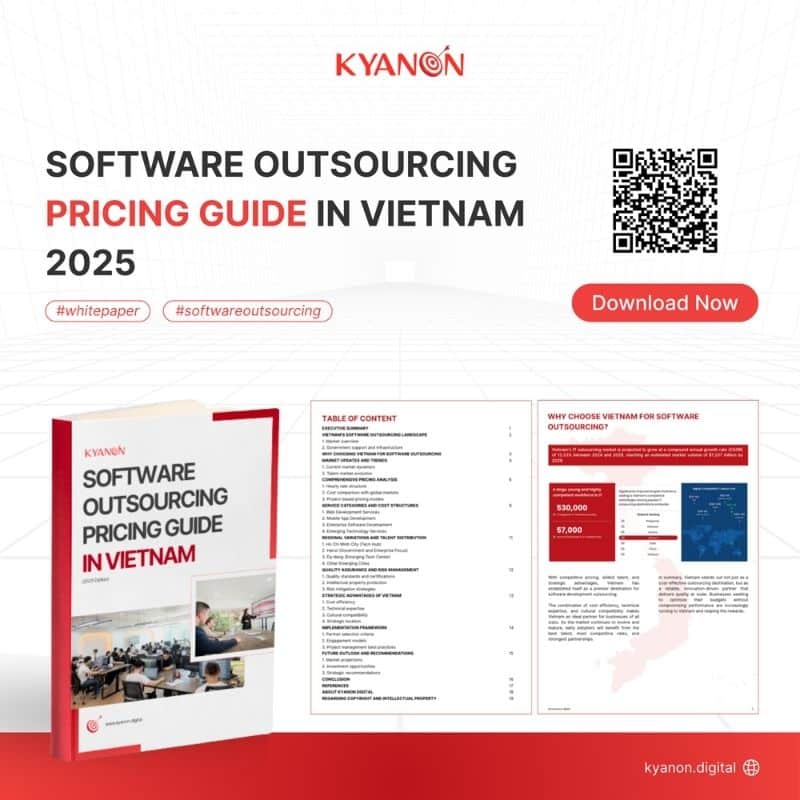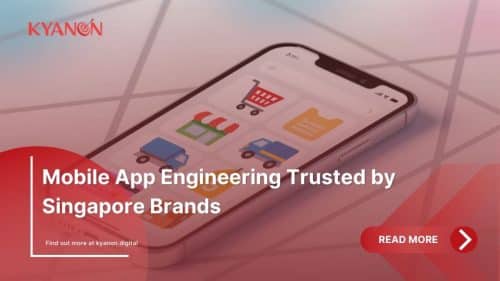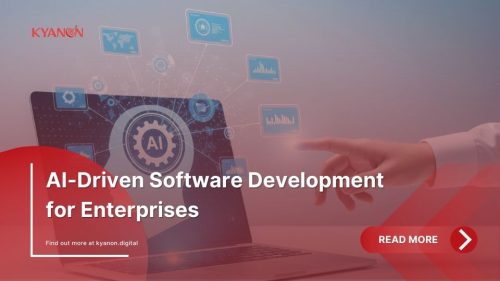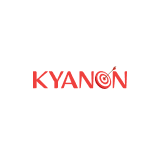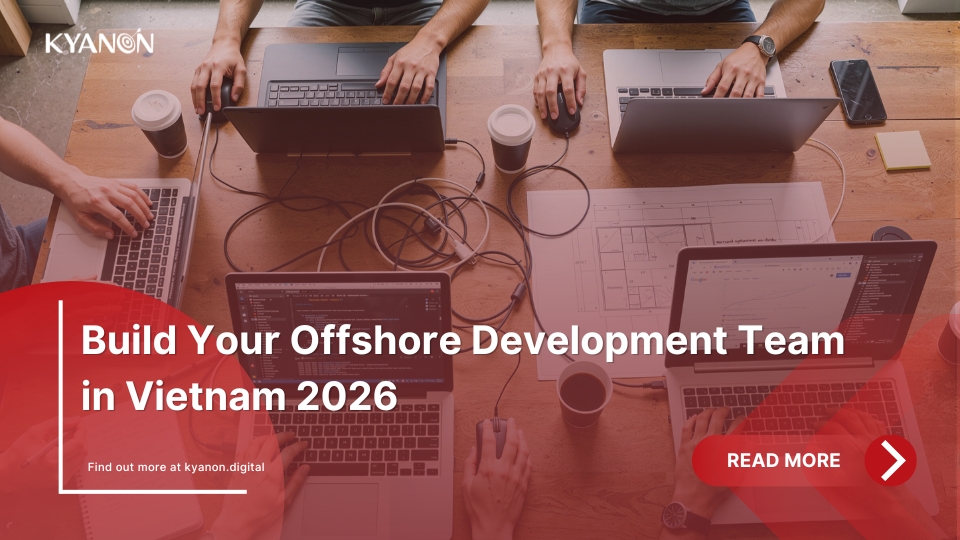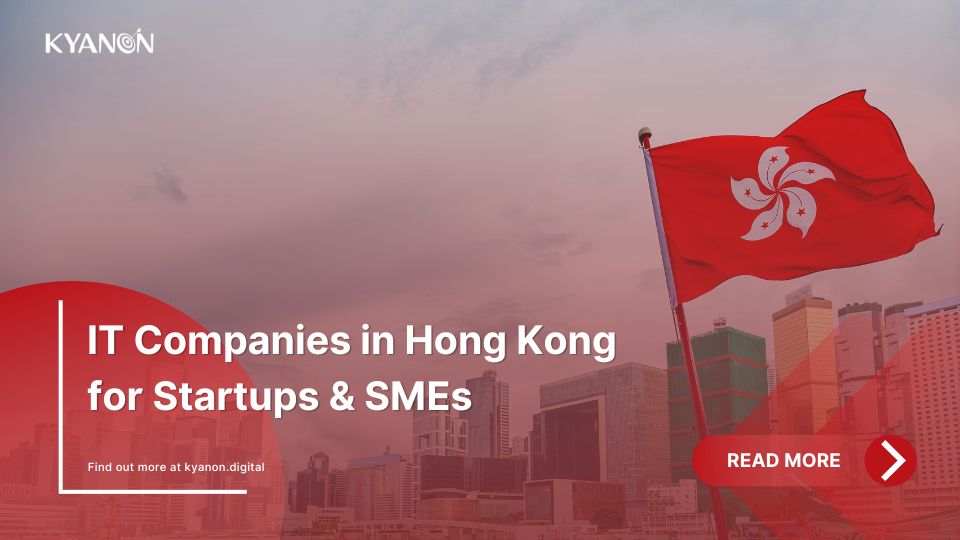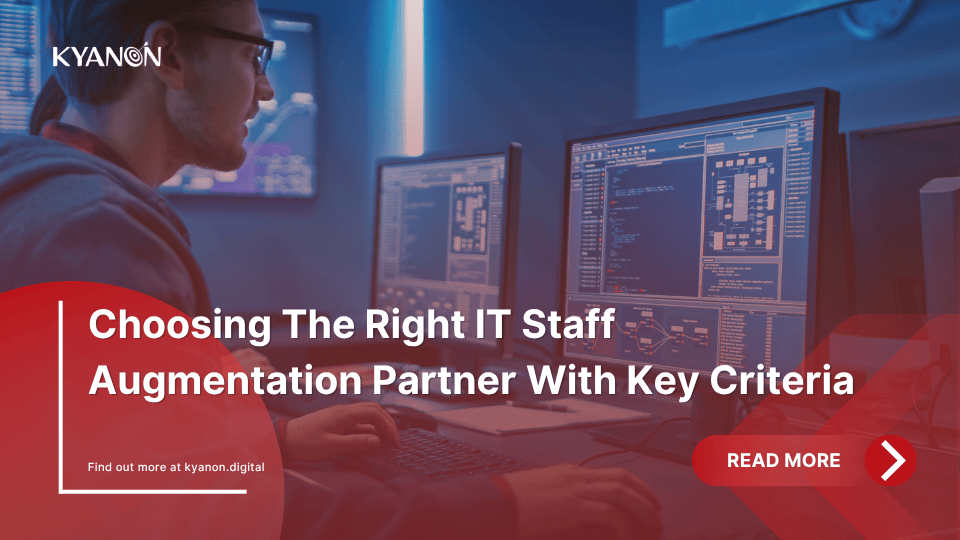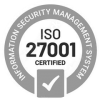Finding skilled tech talent fast, without sacrificing quality or control, is a growing challenge for CTOs and founders. Traditional hiring takes time, while full outsourcing can limit visibility and flexibility.
That’s why IT staff augmentation services are gaining momentum. By integrating external professionals into your internal team, you can accelerate delivery, plug skill gaps, and retain full technical ownership. The global IT services outsourcing market size was estimated at USD 744,623.5 million in 2024 and is projected to grow at a CAGR of 8.6% from 2025 to 2030-highlighting the increasing reliance on flexible workforce strategies in the digital age. (Grand View Research)
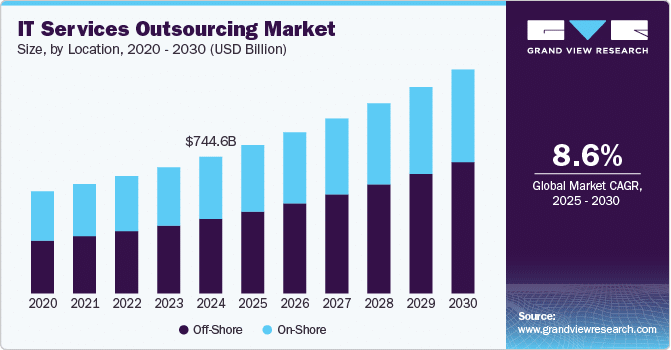
But choosing the right model and execution strategy is key. In this guide, we explore the types, process, and staff augmentation best practices to help you maximize ROI and ensure project success.
Further reading:
- Case Studies: How IT Staff Augmentation Companies Fueling Business Growth
- Types Of It Staff Augmentation All You Need To Know
What is Staff Augmentation and Why It Matters
Staff augmentation is a workforce strategy that allows businesses to scale their development teams by bringing in external talent on a temporary or flexible basis. Unlike full outsourcing, where entire projects are handed over to third-party vendors, staff augmentation embeds skilled professionals directly into your in-house team, ensuring alignment with internal workflows, culture, and quality standards.
When it comes to IT staff augmentation services, the value lies in agility and control. You’re not offloading responsibility-you’re enhancing your capabilities by supplementing your team with developers, testers, designers, or tech leads who can hit the ground running. However, to fully realize these benefits, it’s essential to follow staff augmentation best practices – from selecting the right partners to onboarding and team integration.
Staff Augmentation vs. Other Outsourcing Models
To understand staff augmentation’s strategic value, it helps to contrast it with other common outsourcing approaches:
| Category | Dedicated Team | Team Augmentation | Full Project Outsourcing |
| Best for | – Best for long-term projects needing continuous updates and support.
– Useful when you need experts to handle part of an ongoing project. |
– When you need extra developers to fill skill gaps.
– Helps meet deadlines by adding resources. |
Ideal when you need a full software solution but lack internal IT resources to manage it. |
| Example Projects | A SaaS company that needs regular updates hires a dedicated team to maintain and improve its platform | An e-commerce business adds extra developers during peak shopping seasons to handle high traffic and launch new features. | A healthcare provider without an internal IT team outsources the development of a custom EHR system to a software company. |
| Cost Considerations | Higher upfront costs but more cost-effective over time due to the team’s deep understanding of the project. | Costs vary based on demand; ideal for short-term or fluctuating needs. | Lower initial cost, but total expenses may rise if changes or extra features are required after delivery. |
| Risk Sharing | Both the company and vendor share risks. The company controls the team, while the vendor handles admin tasks. | The company takes on most of the risk, managing the project while the vendor provides extra staff. | The vendor is fully responsible for the project, but the company risks working with an unreliable vendor. |
| Team Integration | The team works closely with your company’s processes and tools.
Dedicated team ensures better communication. Greater retention of knowledge and expertise. |
New staff need time to adjust and integrate.
Temporary workers may struggle to fully adapt to your workflows. |
Minimal integration with your internal team and development processes. |
| Project Management | The vendor manages the team but keeps you updated regularly.
Some project coordination may still be required on your side. |
You handle most management tasks, including assigning work, setting priorities, tracking progress, and ensuring quality. | Minimal management required.
The vendor is responsible for delivering the project on time and meeting quality standards, with penalties for delays. |
With staff augmentation, you maintain ownership of the codebase, architecture decisions, and delivery timelines, while also benefiting from the speed and flexibility of external hiring. This is especially critical for product-driven companies that rely on agility, IP protection, and direct collaboration between teams.
Key Benefits of IT Staff Augmentation
At Kyanon Digital, we’ve seen firsthand how a well-implemented staff augmentation strategy drives measurable outcomes for growing tech companies. Some of the top benefits include:
- No Costly Recruitment Process: Skip months of talent sourcing, screening, and onboarding. Vendors take care of that for you, saving time and operational cost.
- Fast & Smooth Onboarding: Augmented staff are typically trained for rapid integration. With clear documentation and processes, they can begin contributing within days, not weeks.
- Effortless Remote Collaboration: Today’s tools and best practices enable seamless integration across geographies and time zones. Daily standups, sprint planning, and code reviews happen as if everyone is under one roof.
- Full Technical Ownership + Expert Support: You retain full control of your roadmap and delivery. Meanwhile, top-tier vendors often provide Centers of Excellence that offer ongoing mentoring, code audits, and performance reviews to keep quality high.
These advantages help product leaders avoid the typical trade-offs between speed and control, allowing them to ship faster without compromising technical integrity.
A Growing Market Backed by Demand
The global staff augmentation market continues to expand rapidly, driven by the rise of remote work, increased tech demand, and talent shortages in key markets. According to Statista, the global IT outsourcing market revenue is projected to reach over $591 billion by 2025, indicating a major share within the broader outsourcing market. The urgency of staff augmentation has been underlined by a 2022 survey conducted by ManPower Group, which revealed that 76% of employers worldwide reported difficulty in securing the skilled talent required to meet their IT and technology needs.
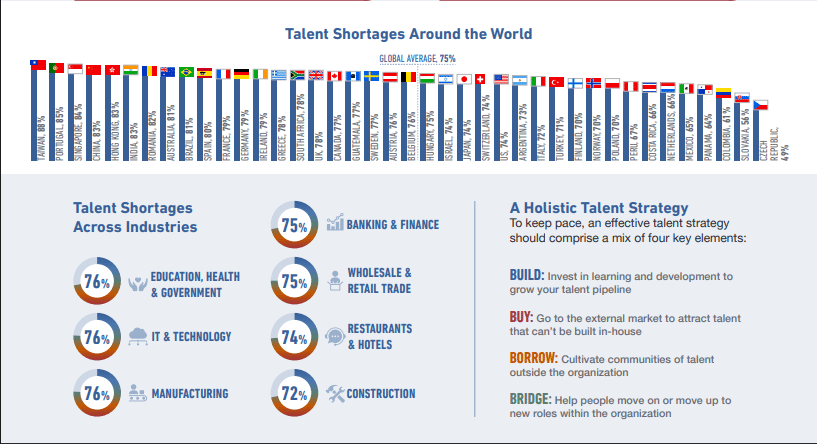
This demand makes staff augmentation not just a temporary fix, but a strategic lever for long-term growth, especially for companies competing in fast-moving industries like SaaS, fintech, logistics, or healthcare.
Types of Staff Augmentation
Choosing the right type of it staff augmentation is crucial for aligning talent with your project needs and business goals. Understanding the distinctions helps CTOs and founders make strategic decisions that optimize resource allocation and maximize ROI. Staff augmentation broadly falls into three categories:
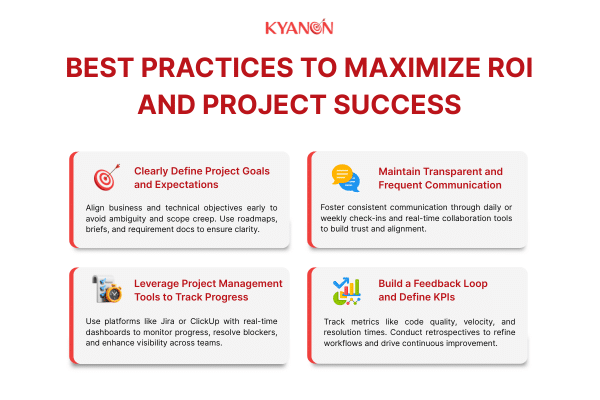
Skill-based Augmentation
This type focuses on adding specific expertise for short-term or project-based needs. For example, if your in-house team lacks expertise in AI, cybersecurity, or cloud migration, you bring in specialists temporarily to fill that gap. Skill-based augmentation is highly flexible and cost-effective, especially when you want to avoid the overhead of hiring full-time experts for niche roles.
- Ideal for projects requiring specialized, emerging technologies
- Often used for proof-of-concept phases, audits, or upgrades
- Enables rapid injection of domain knowledge without long-term commitment
Commodity-based Augmentation
Commodity-based augmentation supplements general roles or repetitive tasks. These might include junior developers, QA testers, or technical support staff who handle standard workloads. This approach helps scale operational capacity quickly without compromising on the core team’s focus.
- Suitable for scaling up delivery capacity or routine operations
- Provides a buffer for peak workloads or product sprints
- Often cost-effective due to the involvement of less specialized talent
Highly-skilled Augmentation
Highly-skilled augmentation integrates senior experts or technical leads into your team to handle complex projects, architecture design, or critical decision-making. These professionals bring deep industry experience, leadership, and the ability to mentor junior staff.
- Recommended for large-scale projects or strategic initiatives
- Adds technical ownership and governance to augmented teams
- Drives innovation, quality, and risk mitigation
Selecting the right type depends on your project complexity, timeline, budget, and long-term vision. For instance, startups may rely heavily on skill-based augmentation to validate new ideas, while enterprises might prioritize highly-skilled augmentation for digital transformation efforts.
By leveraging these types strategically, companies can optimize cost, maintain agility, and accelerate time-to-market without compromising quality.
Transform your ideas into reality with our services. Get started today!
Our team will contact you within 24 hours.
3. The Staff Augmentation Process
Implementing it staff augmentation services successfully goes beyond hiring talent, it requires a well-defined, strategic process to ensure seamless integration and long-term success. This structured process enables faster team scaling, stronger collaboration, and alignment with your project goals from day one.

Step 01: Define Your Needs
Identify the specific skills and expertise required for your project. Determine the number of developers, their roles, and the technologies they should be proficient in. Clearly outline the experience level you expect for each role to ensure the team aligns with your project goals.
Step 02: Research Vendors
Look for vendors specializing in dedicated team services. Evaluate their experience, talent pool, and ability to scale the team based on your needs. Check client reviews, case studies, and certifications such as ISO 9001 (quality management) and ISO 27001 (data security) to assess reliability.
Consider the team’s location based on factors like time zone compatibility, language proficiency, and legal regulations. Nearshore or offshore options can provide access to skilled professionals while optimizing costs.
Step 03: Request Proposals
Share your team requirements with shortlisted vendors, including:
- The number of developers and their roles
- Required technical expertise and experience levels
- Expected duration of engagement
- Budget and flexibility for scaling the team
Request details on the vendor’s hiring process, team availability, and pricing structure.
Step 04: Interview Key Team Members
Once the vendor provides candidate profiles, interview key team members such as tech leads or senior developers to assess their skills, communication abilities, and alignment with your company culture. For other roles, rely on the vendor’s internal selection and vetting process to save time. You may also assign test tasks or start with a short trial period to validate capabilities.
Step 05: Negotiate the Contract
Since you control the team’s tasks and priorities, the contract should focus on:
- Team composition and flexibility to scale
- Pricing model (e.g., fixed monthly rate per developer)
- Confidentiality, intellectual property rights, and security agreements
- Performance expectations, availability, and communication protocols
Service Level Agreements (SLAs) should outline response times, quality standards, and reporting structures.
Step 06: Onboard and Integrate the Team
Once hired, ensure a smooth onboarding process by:
- Providing access to necessary tools, repositories, and documentation
- Setting up communication channels (Slack, Jira, GitHub, etc.)
- Defining workflows, reporting structures, and regular check-ins
- Facilitating knowledge transfer and collaboration with your internal team
While the process lays the groundwork, adopting proven best practices will help you maximize the value of your extended team.
Staff Augmentation Best Practices to Maximize ROI and Project Success
While staff augmentation offers flexibility and speed, its success depends on more than just hiring the right talent. To truly drive ROI and project success, companies must approach augmentation strategically, treating external engineers as an extension of their core team-not just temporary resources. By implementing proven staff augmentation best practices, businesses can ensure smooth collaboration, faster ramp-up times, and long-term value. Here are key best practices to follow.

1. Clearly Define Project Goals and Expectations
Why it matters:
Ambiguity in project goals is a leading cause of failure. Lack of alignment between business and project objectives is cited as a significant contributor to project failure, with some sources noting figures like 44% of projects fail due to lack of alignment between business and project objectives (ProProfs Project Management Statistics, 2025). Without a clear understanding of what success looks like, teams waste time and resources.
How to implement:
- Develop detailed project briefs that outline the problem, scope, and deliverables.
- Use product roadmaps to communicate milestones and timelines.
- Define technical requirements and dependencies upfront to reduce scope creep.
2. Maintain Transparent and Frequent Communication
Why it matters:
Remote and distributed teams rely heavily on communication. A Deloitte study found that effective communication improves project success rates by up to 20% (Deloitte Global Human Capital Trends, 2024).
How to implement:
- Schedule regular daily stand-ups or weekly sync meetings to align priorities.
- Use collaboration platforms like Slack, Microsoft Teams, or Zoom for real-time interaction.
- Encourage cross-functional discussions between in-house and augmented engineers to build trust and a shared culture.
3. Leverage Project Management Tools to Track Progress
Why it matters:
Visibility into task status and productivity is critical. According to Gartner’s 2024 report on Adaptive Project Management and Reporting (APMR), modern project management tools that integrate AI and real-time dashboards enable teams to better track progress, identify bottlenecks early, and improve collaboration across distributed teams. These capabilities significantly enhance on-time delivery and overall project performance by providing actionable insights and automating routine tasks.
How to implement:
- Adopt tools like Jira, Trello, or ClickUp to assign tasks, track progress, and identify blockers.
- Use dashboards and burndown charts for real-time insights and stakeholder reporting.
- Ensure all team members, including augmented staff, update their task status regularly.
4. Build a Feedback Loop and Define KPIs
Why it matters:
Continuous improvement is essential for sustainable success. Organizations that consistently track key performance metrics are better positioned to identify bottlenecks, adapt quickly, and deliver higher-quality outcomes over time.
How to implement:
- Define KPIs such as sprint velocity, code quality (using tools like SonarQube), and issue resolution times.
- Conduct regular retrospectives involving both internal and augmented teams to collect qualitative feedback.
- Use insights to refine processes and enhance collaboration.
| Best Practice | Key Benefits |
| Define Clear Goals | Reduce scope creep, improve focus |
| Frequent Transparent Communication | Build trust, improve alignment |
| Use Project Management Tools | Increase visibility and accountability |
| Feedback Loops & KPIs | Continuous improvement, higher retention |
Case Study: Scaling Accenture’s Delivery Capabilities with Kyanon Digital
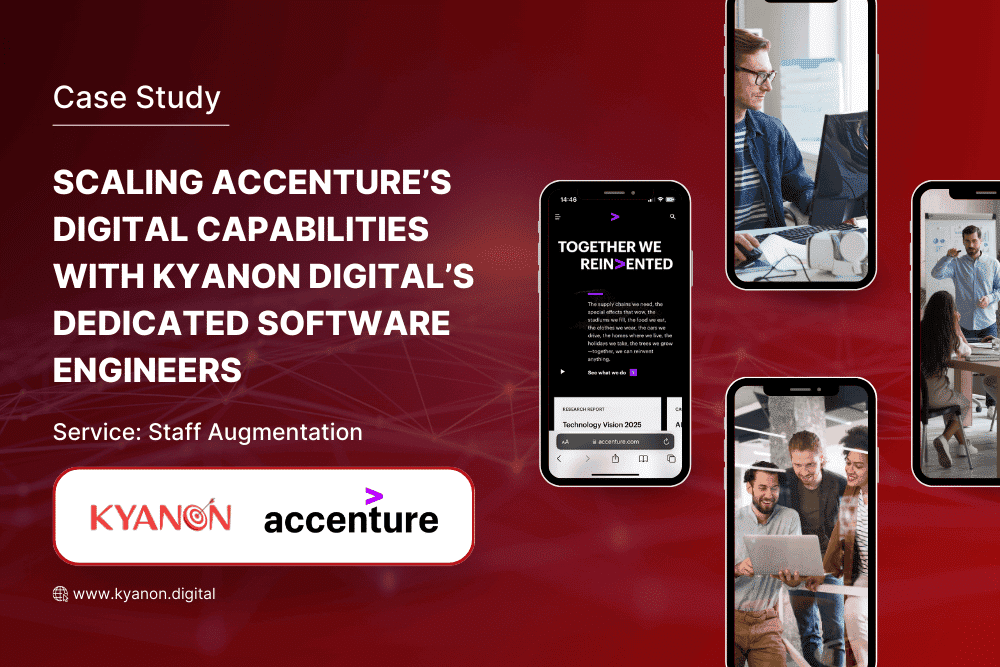
When Accenture, a global consulting powerhouse, sought to scale its software delivery for digital transformation projects across Southeast Asia, they partnered with Kyanon Digital for strategic staff augmentation.
Through a tailored approach, Kyanon Digital provided a dedicated team of backend and mobile engineers with proven expertise and seamless integration into Accenture’s workflows.
Key outcomes:
- Faster time-to-market: Kyanon’s engineers helped accelerate delivery cycles by 35%, enabling quicker rollout of critical features across multiple client engagements.
- Seamless integration: A structured onboarding process-complete with technical documentation, workflow training, and collaboration protocols-reduced ramp-up time to just 3 days.
- Sustained quality and velocity: With continuous collaboration and knowledge sharing, the joint team delivered high-quality outputs while maintaining flexibility for scaling up based on project needs.
This collaboration not only helped Accenture extend its capabilities rapidly, but also demonstrated the power of staff augmentation when executed with the right partner, clear processes, and shared goals.
Read the full case study here: Scaling Accenture’s Digital Capabilities with Kyanon Digital’s Dedicated Software Engineers
Current and Emerging Staff Augmentation Trends
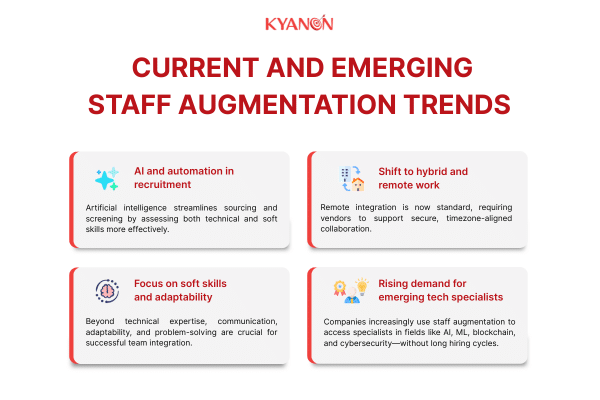
1. Adoption of AI and Automation in Talent Acquisition
AI and automation are transforming talent acquisition by significantly enhancing efficiency, accuracy, and decision-making in recruitment processes. According to McKinsey, AI-driven workplace technologies hold a $4.4 trillion potential for productivity growth, highlighting the profound impact AI can have on corporate operations, including HR functions.
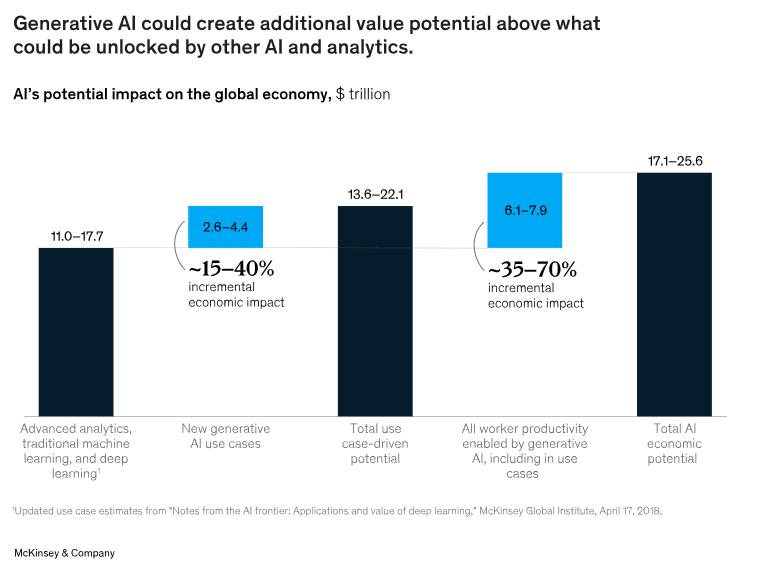
Deloitte has introduced AI-enabled recruitment assistants that streamline candidate management, schedule virtual interviews, and analyze candidate data, enabling recruiters to focus on strategic hiring decisions rather than administrative tasks. (Deloitte).
Furthermore, a 2024 survey revealed that 71% of organizations now integrate AI tools into their talent acquisition strategies, with 92% of Fortune 500 companies using generative AI for tasks like drafting job descriptions and personalizing candidate outreach. (Mckinsey) These tools reduce time-to-hire and improve candidate experience, making AI a critical component in staff augmentation.
2. Shift towards Hybrid and Remote Working Models
The hybrid work model, combining remote and in-office work, has become the dominant approach in modern enterprises. Statista reports that 71% of employees worldwide prefer working fully or mostly remotely, underscoring the demand for flexible work arrangements (Statista).
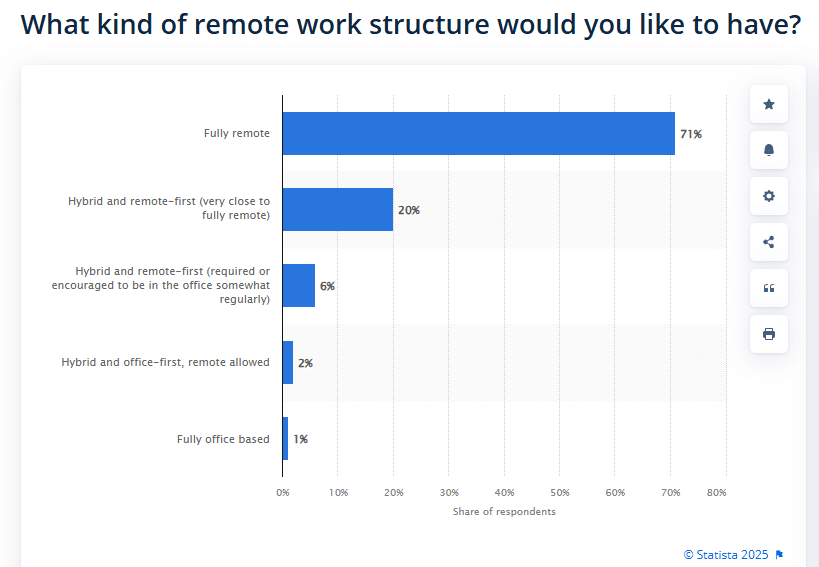
This shift enables companies to tap into a global talent pool without geographic constraints, which is especially beneficial for IT staff augmentation services. Hybrid models help balance collaboration and autonomy, enhancing employee satisfaction and retention while maintaining productivity. Remote work also drives the adoption of AI and automation tools to facilitate communication, scheduling, and project management across distributed teams. (Slashtop)
3. Emphasis on Soft Skills and Adaptability
As organizations embrace flexible staffing and emerging technologies, soft skills such as communication, adaptability, and problem-solving have become essential. The dynamic nature of hybrid teams and rapid technological change require employees who can quickly learn new tools, collaborate across virtual environments, and navigate ambiguity. Gartner emphasizes reskilling employees to apply emerging technologies effectively, which includes fostering adaptability and continuous learning (Gartner). This focus ensures that augmented staff not only bring technical expertise but also integrate smoothly into evolving organizational cultures and workflows.
4. Growing Demand for Specialists in Emerging Technologies
There is a rapidly increasing demand for specialists in cutting-edge fields such as AI, cybersecurity, cloud computing, and data science. Gartner highlights emerging tech trends like intelligent simulation, synthetic data, and preemptive cybersecurity, which drive the need for highly skilled professionals capable of leveraging these innovations (Gartner). According to ZydeSoft, the global staff augmentation market is growing rapidly, fueled by demand for specialists in AI, machine learning, cloud architecture, cybersecurity, AR/VR, blockchain, and IoT.
For example, the AI industry is projected to grow at a CAGR of 42.2% through 2027, and the global cybersecurity market is expected to reach $424.97 billion by 2030, reflecting the critical need for expertise in these areas (GlobeNewswire). Companies increasingly rely on staff augmentation to fill these specialized roles quickly and cost-effectively, ensuring they remain competitive in fast-evolving digital landscapes.
Why Partner with Kyanon Digital?
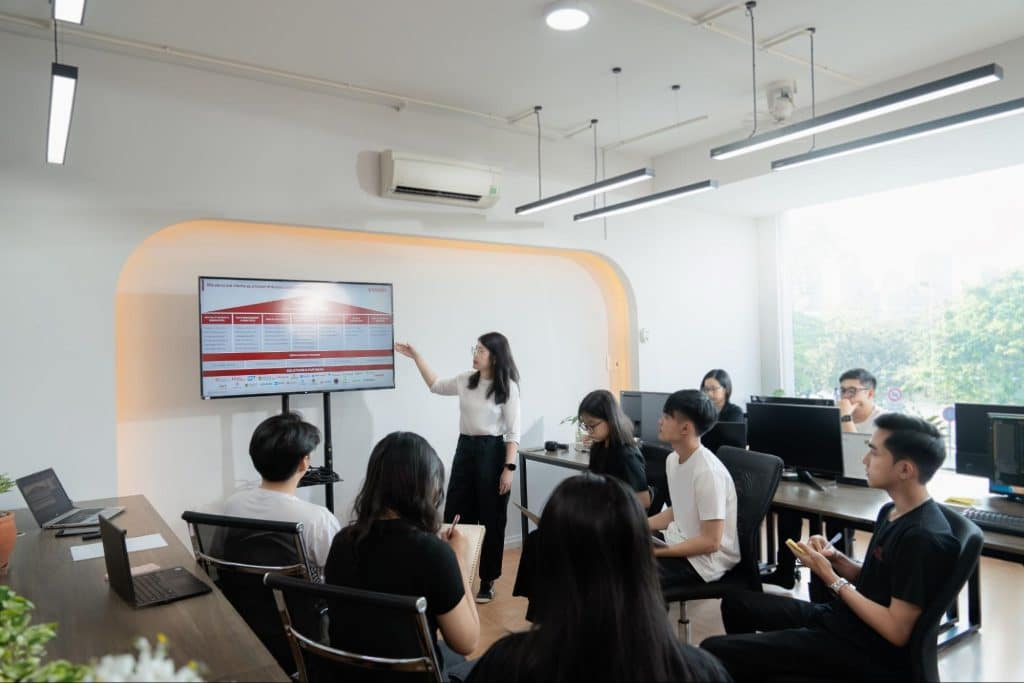
We’re a Tech Partner, Not a Recruiter
We build your team strategically, aligning talents with your software vision and roadmap, not just job requirements. With ongoing upskilling and expert support from our Center of Excellence, your talent stays ahead of challenges and delivers results.
Comprehensive Talent Ecosystem
Kyanon Digital talent ecosystem encompasses over 50,000 technology professionals
- Internal Talent Core: 300+ professionals
- K-Fresh Program: Nurturing Future Digital Leaders from 18 Universities in Vietnam
- External Talent Network: 15,000+ premium candidates
- Partner Network: 1,000+ trusted partners
Your One-Stop Talents Impact Solution
We manage from talent acquisition to HR management for your tech workforce, freeing your team to focus on core business and innovation.
Transform your dedicated team from a development resource into a strategic advantage. Contact Kyanon Digital today and discover why leading organizations trust us as their dedicated hiring solution partner.
Conclusion
Strategic resourcing doesn’t just solve capacity gaps-it builds the foundation for long-term innovation, speed, and resilience. But success with staff augmentation doesn’t happen by default. It requires deliberate alignment between business goals, team structures, communication flows, and cultural integration.
In an era where agility and access to specialized talent are business-critical, companies that master staff augmentation gain more than flexibility-they accelerate delivery, optimize costs, and stay ahead of change.
At Kyanon Digital, we don’t just provide engineers-we build high-performing teams that plug seamlessly into your workflows. From selecting the right talent to ensuring timezone-aligned collaboration and continuous delivery, we help you turn staff augmentation into a strategic edge.
Key Takeaways
- IT Staff augmentation offers a flexible and scalable alternative to traditional hiring, ideal for fast-growing tech teams.
- Following best practices-from defining requirements to onboarding and tracking performance-is key to maximizing value.
- Emerging trends like AI in recruitment, remote work integration, and the rising importance of soft skills are reshaping the landscape.
- Choosing the right partner (like Kyanon Digital) helps ensure quality, compliance, and long-term success.
- Strategic implementation of staff augmentation transforms it from a temporary fix into a competitive advantage.
References
- IT Services Outsourcing Market Trends, Grand View Research
- IT Outsourcing – Worldwide, Statista
- Talent Shortage Around the World, ManPower Group
- The High Cost of Low Performance, ProProfs Project Management Statistics
- 2024 Global Human Capital Trends, Deloitte
- Adaptive Project Management and Reporting (APMR), Gartner
- The economic potential of generative AI: The next productivity frontier, McKinsey
- Deloitte’s AI-enabled recruitment intelligent assistant, Deloitte
- The state of AI: How organizations are rewiring to capture value, Mckinsey
- What kind of remote work structure would you like to have?, Statista
- These Trends in Emerging Tech Will Define the Future of Business, Gartner
- Artificial Intelligence Market Size, Share & Trends Analysis Report By Solution, By Technology, By End Use, By Region And Segment Forecasts, 2020 – 2027, GlobeNewswire
Get the Vietnam Software Outsourcing Pricing Guide 2025
Your shortcut to Vietnam’s outsourcing costs and key market insights.

Why work with Kyanon Digital?
- Expertise Trusted by Fortune 500 Clients
With deep experience serving Fortune 500 companies, we deliver tailored, high-impact solutions that meet the unique demands of global enterprises. - A World-Class IT Team
Our 500+ IT experts—spanning consulting, project management, technical architecture, software engineering, QA, DevOps, and AI/ML—are committed to excellence in every project. - Quality at the Core
Certified under ISO 9001, our quality-first approach guarantees precision, reliability, and continuous improvement. - Uncompromising Security
ISO 27001-certified, we integrate robust security into every process, leveraging advanced technologies to protect your data against evolving threats.



